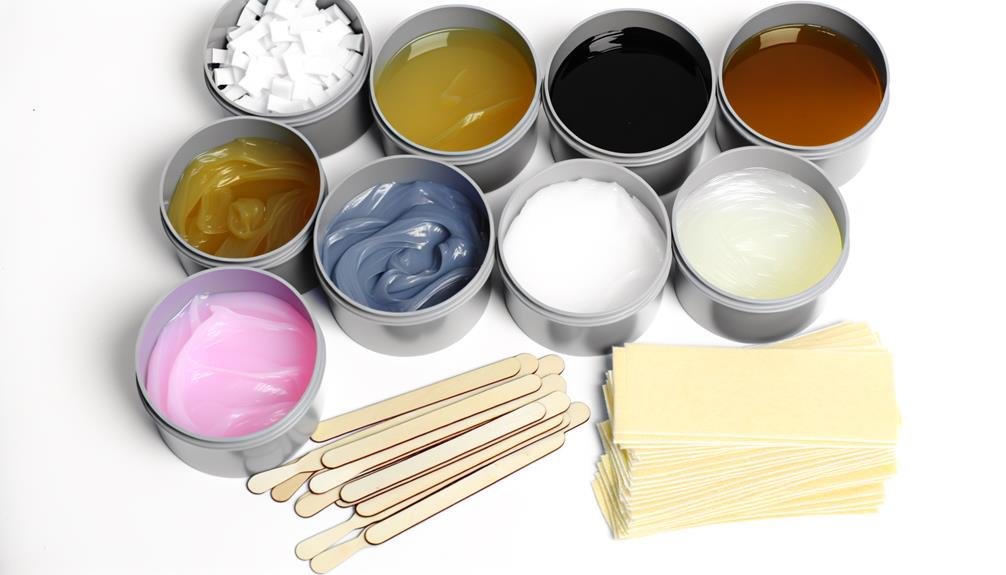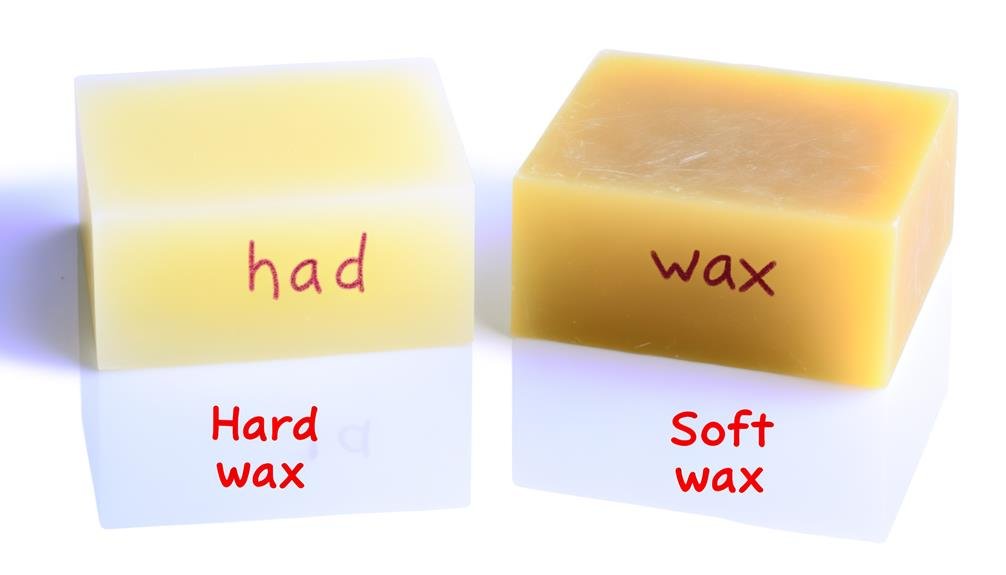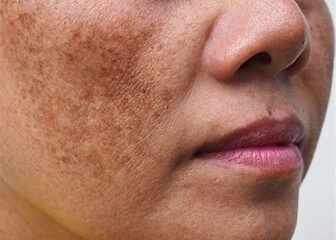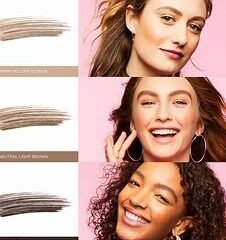Waxing
Waxing for Sensitive Skin
Sensitive skin is like a delicate flower, needing gentle care and attention. When it comes to waxing, it's crucial to cater to its unique needs.
You'll find success by choosing a gentle wax, free from harsh ingredients. Prepare your skin with hydration and anti-inflammatory products.
Follow proper technique and soothe your skin with a post-waxing lotion. Don't forget about aftercare to keep your skin feeling smooth and happy.
With these tips, you can ensure a safe and comfortable waxing experience for your sensitive skin.
Key Takeaways
- Identifying and understanding the signs of sensitive skin during waxing, such as redness, rashes, and inflammation.
- Preparing and choosing appropriate products for sensitive skin, including gentle exfoliation, hydrating moisturizers, and specific waxes designed for sensitive skin.
- Providing proper post-wax care for sensitive skin, including soothing and hydrating products that reduce redness and irritation.
- Educating and offering options to clients with sensitive skin, including discussing risks and benefits, offering choices between soft and hot wax, and providing information on alternative hair removal methods.
Identifying Sensitive Skin
When identifying sensitive skin for waxing, consider observing any redness, rashes, or inflammation as potential indicators of skin sensitivities. It's important to pay attention to these signs as they can indicate that the skin may react adversely during the waxing process.
Additionally, individuals with a combination of dry and sensitive skin or oily and sensitive skin require special consideration when choosing the appropriate wax for hair removal. Dehydrated or dry skin patches can also be a sign of sensitivity, highlighting the need for proper waxing techniques and precautions to prevent further irritation.
Moreover, temperature-related skin issues can further indicate sensitivity, emphasizing the importance of selecting the right wax for sensitive skin. It's crucial to identify triggers and avoid aggravating products for individuals with sensitive skin, particularly when it comes to choosing a wax for hair removal.
Types of Sensitive Skin
If you have sensitive skin, it can be categorized into two main types: dry and sensitive skin, or oily and sensitive skin. Understanding your skin type is crucial, especially when it comes to waxing. Here's a brief overview of the two types:
- Dry and Sensitive Skin:
- Prone to redness, rashes, and inflammation.
- Can feel tight and uncomfortable, especially after hair removal.
- Requires a gentle and hydrating wax to minimize irritation.
- Best wax option: Stripless hard wax with moisturizing properties.
- Oily and Sensitive Skin:
- Often greasy with enlarged pores and persistent acne.
- Redness, itchiness, or patchiness can occur alongside the oiliness.
- Needs a wax that effectively removes hair without exacerbating oiliness or causing breakouts.
- Best wax option: Stripless hard wax designed for sensitive and acne-prone skin.
Understanding the specific needs of your sensitive skin type is essential for a successful waxing experience. When choosing a wax, opt for the best option suited for your skin type to minimize discomfort and maximize the benefits of hair removal.
Preparing Sensitive Skin for Waxing
Prepare your sensitive skin for waxing by following a gentle exfoliation and hydration routine. Before waxing sensitive skin, it's crucial to ensure the skin is well-prepared to minimize potential irritation.
Begin with a gentle exfoliation using a dry brush or an oil-based salt scrub to remove dead skin cells and prevent ingrown hairs.
Hydrate the skin with a fragrance-free, hypoallergenic moisturizer to maintain its natural barrier and reduce sensitivity.
When selecting the best wax for sensitive skin, opt for a formula specifically designed for sensitive skin and consider consulting a professional salon for their recommendation.
Additionally, it's essential to conduct a patch test prior to waxing to assess how your skin reacts to the wax. Apply a small amount of wax to a discreet area and observe any adverse reactions before proceeding with the full treatment.
Choosing the Best Wax
To cater to clients with sensitive skin, prioritize selecting a wax formula that caters to their specific needs. When choosing the best wax for sensitive skin, follow these tips to ensure a smooth and irritation-free waxing experience:
- Consider using hard wax: Hard wax is often the best choice for sensitive skin, especially in delicate areas like the bikini area. It adheres to the hair rather than the skin, making it less painful and irritating.
- Opt for high-quality wax: Investing in a high-quality wax can make a significant difference for clients with sensitive skin. Look for waxes that contain soothing ingredients like chamomile or aloe vera, which can help prevent irritation.
- Use hot wax with caution: While hot wax can be effective for coarse hair and sensitive skin, it's important to pay attention to the temperature. Ensure that the wax is heated to the proper temperature to avoid burning or discomfort.
- Prevent irritation with proper technique: Regardless of the type of wax you choose, using the right technique is crucial for preventing irritation. Be gentle when applying and removing the wax to minimize any potential discomfort for your clients.
Post-Wax Care
Maintain your skin's health and reduce post-waxing irritation by applying a gentle, soothing post-wax care product immediately after the waxing session. This step is crucial, especially for sensitive skin, as it helps to calm the skin and reduce the chances of developing redness, ingrown hairs, and other skin issues. Using clean formulas with anti-inflammatory and antioxidant properties can further aid in soothing the skin and preventing any adverse reactions. Starpil pre and post-wax care products, such as Starsoft, are specifically formulated to cater to sensitive skin, providing hydration and protection post-waxing.
To help you understand the importance of post-wax care, here's a table outlining the key benefits and considerations for post-wax care products:
| Benefits | Considerations |
|---|---|
| Calms and soothes sensitive skin | Check for allergens or irritants in the formula |
| Hydrates the skin | Look for anti-inflammatory properties |
| Helps prevent ingrown hairs | Ensure the product is suitable for your skin type |
| Reduces redness and irritation | Consider using products with natural ingredients |
| Promotes skin health and recovery | Patch test new products before full application |
Client Management
When meeting with clients, inform them about the importance of understanding their skin's sensitivity before scheduling a waxing appointment. It's crucial to manage clients effectively, especially those with sensitive skin, to ensure a positive waxing experience. Here are some essential client management tips for waxing sensitive skin:
- Educate clients about their skin: Take the time to inform clients about the specific needs of sensitive skin, especially when it comes to waxing. Discuss the potential risks and benefits of waxing, and address any concerns they may have.
- Offer a choice of wax: Provide options such as soft wax or hot wax for sensitive skin, and explain the differences between the two. Clients will appreciate your consideration for their comfort.
- Discuss Brazilian Waxing: For clients considering Brazilian waxing, explain the process in detail, including the potential impact on sensitive skin. Make sure they understand the aftercare involved.
- Provide aftercare instructions: Give clients thorough aftercare instructions to minimize the risk of irritation or inflammation. This will demonstrate your commitment to their well-being beyond the waxing appointment.
Frequently Asked Questions
What Type of Waxing Is Best for Sensitive Skin?
For sensitive skin, the best type of waxing is one that uses hard waxes like Starsoft or Calendula, free from perfumes and artificial ingredients, to minimize irritation and nourish your skin.
Can You Get a Wax if You Have Sensitive Skin?
You can definitely get a wax if you have sensitive skin. It's important to choose the right wax and take proper precautions to minimize irritation. Consult with a professional to ensure a comfortable experience.
What Is the Best Way to Remove Hair for Sensitive Skin?
For sensitive skin, the best way to remove hair is by using a high-quality, hypoallergenic wax and preparing your skin with hydration and gentle exfoliation. Aftercare with clean formulas is essential for long-lasting results.
How Do You Wax Without Irritating Skin?
To wax without irritating your skin, choose a low-temperature wax and apply pre-waxing oil. Ensure proper hydration and gentle exfoliation before waxing. Aftercare is crucial – hydrate and use clean formulas with anti-inflammatory properties to prevent irritation.
Conclusion
So, if you have sensitive skin, remember to take extra care when waxing.
Identify your skin type, prepare your skin beforehand, choose the right wax, and follow proper aftercare.
By following these steps, you can have a successful and safe waxing experience.

Waxing
Waxing Pot and Wax for Every Skin Type Removal TIPs
Looking for waxing tips for every skin type? Check out our guide on the best waxing pot and wax to use for different skin types.

Are you aware that nearly 85% of women in the United States remove unwanted hair on a regular basis? If you’re one of them, then you know the importance of finding the right wax and waxing pot for your specific skin type. But with so many options available, how do you know which one is best for you? In this discussion, we will explore the different types of wax and waxing pots that cater to every skin type, helping you achieve the smooth and hair-free results you desire. So, whether you have dry, oily, or sensitive skin, keep reading to discover the tips and tricks that will revolutionize your waxing experience.
Key Takeaways
- Consider your skin type and the area you will be waxing when choosing between hard wax and soft wax.
- Hard wax is recommended for sensitive skin and smaller sections, while soft wax is ideal for larger areas.
- Opt for hard wax or stripless wax for sensitive skin to minimize irritation and discomfort.
- Practice pre and post-wax care essentials, such as cleansing the area before waxing, exfoliating to prevent ingrown hairs, and moisturizing the skin after hair removal.
Find the Perfect Wax for Your Skin Type
To find the perfect wax for your skin type, consider whether you would benefit more from using hard wax or soft wax. Both types of wax can effectively remove hair, but they have different properties that make them more suitable for certain areas of the body. If you have sensitive skin or want to wax more delicate areas like the bikini area or face, hard wax may be the better choice. Hard wax adheres to the hair only and not the skin, making it less painful and reducing the risk of irritation. On the other hand, if you are waxing larger areas like your legs or arms, soft wax may be more appropriate. Soft wax can cover more surface area at once, making the process quicker and more efficient. When choosing a wax, it is important to consider your skin type and consult with a board-certified dermatologist if you have any concerns. They can provide personalized recommendations based on your specific needs and help you achieve the best results.
How to Use Hard Wax for At-Home Hair Removal
Using hard wax for at-home hair removal is a simple and effective method for achieving smooth and hair-free skin. Here are some tips to help you properly use hard wax for hair removal:
- Start by cleansing the area you want to wax with a gentle cleanser to remove any dirt or oils. This will ensure that the wax adheres properly to the skin.
- Apply a thin layer of pre-wax oil to protect your skin and create a barrier between the wax and your skin. This will help prevent any irritation or discomfort during the hair removal process.
- Heat the hard wax in a wax melter or warmer until it reaches the recommended temperature. Stir the wax slightly to cool it down a bit before applying it to your skin. This will prevent burns or discomfort.
- Apply the wax in the direction of hair growth, making sure to create a lip at the end. This lip will make it easier to remove the wax later on.
- Wait for the wax to harden completely before removing it. Then, quickly and firmly pull the wax off in the opposite direction of hair growth. This will ensure effective hair removal.
Hard Wax Vs. Soft Wax: Choosing the Right Option

When deciding between hard wax and soft wax for hair removal, it is important to consider your specific hair type and the area you will be waxing. Both types of wax have their own benefits, so it’s essential to choose the right option for your needs.
Hard wax is recommended for sensitive skin because it adheres to the hair shaft and removes on its own, making it less painful and gentler on delicate areas. It is also effective for preventing ingrown hairs and leaves the skin smooth and hair-free. Hard wax is suitable for smaller sections, like the bikini area or face, and works well with a wax warmer.
On the other hand, soft wax is ideal for larger areas like legs or arms. While it may be more painful than hard wax, it is still effective in removing the hair from the root. Soft wax is also great for exfoliating the skin and moisturizing it, leaving you with smooth and silky results.
Tips for Waxing Sensitive Skin
If you have sensitive skin, it’s crucial to take extra precautions when waxing to minimize any potential irritation or discomfort. Here are some tips to help you have a successful waxing experience:
- Choose the right wax: Opt for hard wax or stripless wax, as they are gentler on sensitive skin compared to soft wax. These types of wax adhere to the hairs, not the skin, reducing the risk of irritation.
- Prep your skin: Make sure your skin is clean and dry before waxing. This helps the wax adhere better to the hairs and reduces the chances of any unwanted side effects like ingrown hairs. You can also apply a light layer of baby powder to absorb any excess moisture and make the waxing process smoother.
- Wax in the opposite direction of hair growth: When applying the wax, be sure to go against the direction of hair growth. This helps the wax grip the hairs more effectively, resulting in a cleaner and less painful waxing experience.
Pre and Post-Wax Care Essentials

Are you unsure about how to properly care for your skin before and after waxing? Taking care of your skin is crucial to ensure a smooth and successful waxing experience. Let’s start with pre-wax care. Before waxing, it is essential to cleanse the area with a pre-wax cleanser to remove any dirt or oils. This will allow the wax to adhere better to the hair and not the skin. Additionally, exfoliating the area beforehand can help remove dead skin cells and prevent ingrown hairs.
Moving on to post-wax care, it is important to soothe and moisturize your skin after hair removal. Applying a soothing lotion or aloe vera gel can calm any redness or irritation. This will also help keep your skin hydrated and prevent dryness. To avoid further irritation, it is recommended to avoid hot showers or baths for at least 24 hours after waxing.
For those with sensitive skin, using a hard wax specifically designed for sensitive skin can help minimize discomfort and reduce the risk of irritation. Taking these steps will ensure that your skin remains smooth and hair-free for longer. Remember to regularly exfoliate the waxed area to prevent ingrown hairs and maintain smooth skin. Lastly, wearing loose-fitting clothing after waxing will allow your skin to breathe and reduce friction.
Frequently Asked Questions
Is Waxing Suitable for All Skin Types?
Yes, waxing is suitable for all skin types. It’s important to choose the right wax for your skin type and follow proper pre and post-wax care. Patch testing is recommended to ensure compatibility.
What Hair Removal Wax Doesn T Stick to Skin?
Hard wax is the best option for hair removal that doesn’t stick to your skin. It adheres to the hair shaft and removes on its own, making it less likely to cause discomfort or irritation.
What Are 3 Waxing Methods?
There are three waxing methods: hard wax, soft wax, and sugaring. Hard wax is great for sensitive areas, while soft wax is ideal for larger areas. Sugaring involves using a paste made of sugar, lemon, and water for hair removal.
How Do You Get Wax off Your Skin That Won’t Come Off?
To get wax off your skin that won’t come off, try applying a little baby oil or olive oil and gently massaging the area. Then, use a warm, damp cloth to wipe away the softened wax.
Waxing
Tools for at Home Waxing
Wondering if at-home waxing is for you? You'll be glad to know that with the right tools, achieving smooth, hair-free skin is more convenient than you think. From wax strips to wax warmers, the right kit can provide a professional waxing experience in the comfort of your own home.
Whether it's for your legs, face, or bikini area, a variety of kits cater to different needs. With proper heating and aftercare, you can achieve safe and effective results while minimizing the risk of skin damage.
So, if you're ready to take control of your hair removal routine, let's explore the essential tools for successful at-home waxing.
Key Takeaways
- Spatula: Apply hard wax beads in a thin, even layer for effective hair removal.
- Wax warmer: Heat wax to the perfect temperature for a professional waxing experience at home.
- Wax strips: Convenient option for sensitive areas like the face, with different sizes for various body areas.
- Hard wax: Gentle and suitable for sensitive skin, removes hair from delicate areas.
Essential At-Home Waxing Tools
You should always use a spatula to apply the hard wax beads onto your skin in a thin, even layer for the best results. This ensures that the wax adheres to the hair follicles and removes on its own, making it suitable for sensitive skin and less painful.
When choosing an at-home hair removal kit, consider a wax warmer to heat the wax to the perfect temperature, providing a professional waxing experience in the comfort of your home. For areas like the face, where the skin is more delicate, wax strips are a convenient option. Look for a kit that includes multiple strip sizes for different body areas and is suitable for sensitive skin.
It's important to consider the type of wax included in the kit. Hard wax is gentle and effective for sensitive skin, while soft wax can be irritating. Ensure the kit contains skin-soothing ingredients to calm and nourish the skin post-waxing.
Types of Wax for Home Use
When selecting a wax for at-home use, consider the wax's ingredients and suitability for your skin type and sensitivity. There are various types of wax for home use, each with its own benefits and suitability for different areas of the body. Here are some popular options to consider:
- Soft or Hard Wax: Best Home Waxing Kits may offer both options, but soft wax is great for larger areas of the body, while hard wax is ideal for sensitive areas like the face and bikini line.
- Flamingo Women's Body Wax: This type of wax is made with organic sugar, making it a natural and eco-friendly option for removing hair from both the face and body.
- Hair Remover Wax Strip: These strips are convenient and easy to use, providing a mess-free waxing experience. Some may come with a removable silicone bowl for heating the wax, enhancing the at-home waxing process.
Choosing the right type of wax for your at-home waxing needs is essential for achieving the best results and ensuring a comfortable experience.
Choosing the Right Waxing Kit
Select a kit that caters to your specific waxing needs and preferences. Consider the areas of your body that need waxing and whether you have a preference for hard or soft wax. If you have sensitive skin, opt for a kit that includes hard wax, as it's more gentle.
Look for a home wax kit that includes both face and body applicators if you plan to wax different areas. Ensure that the kit is designed to remove unwanted hair from the specific areas you're targeting. Check the ingredients to make sure they don't contain any potential allergens, and prioritize hydration by choosing a kit with added oils.
For those with sensitive skin, it's crucial to select a body wax kit that's formulated to be gentle and soothing. Additionally, consider kits that come with aftercare products to soothe and moisturize the skin after waxing.
Post-Waxing Skin Care
After waxing, it's important to regularly apply aloe to soothe the skin and minimize irritation. This will help to calm any redness and sensitivity caused by the hair removal process. In addition to aloe, consider using nourishing oils to keep the skin hydrated and prevent dryness. Opt for oils that are good for sensitive skin to minimize the risk of any adverse reactions.
Use a purifying lotion to cleanse the skin after waxing. This will help to remove any leftover wax residue and soothe the skin.
Consider wearing loose clothing to prevent friction and irritation on the freshly waxed skin.
Maintain proper hygiene to avoid infections. Keep the waxed area clean and dry to reduce the risk of any post-waxing complications.
Tips for Successful At-Home Waxing
To achieve successful at-home waxing, ensure you have high-quality wax strips and a reliable wax heater. Choose a wax kit that's easy to use and suitable for your skin type. For sensitive skin, opt for a gentle formula designed to minimize irritation. Consider a hard wax for smaller, delicate areas like the face, as it provides good precision and is less harsh on the skin.
Before applying the wax, test the temperature on a small area of skin to avoid burns. It's crucial to follow the instructions regarding the wax's temperature to ensure safe and effective hair removal.
Additionally, to reduce discomfort during waxing and minimize ingrown hairs, exfoliate the skin a day or two before waxing. After waxing, soothe the skin with a post-wax oil or lotion specifically formulated to calm and moisturize the skin.
Frequently Asked Questions
What Do You Need to Wax at Home?
You need waxing strips, warming kits, and soothing lotions for at-home waxing. Choose soft or hard wax based on your hair type and sensitivity. Use large strips for legs and smaller ones for the face.
What Equipment Is Needed for Waxing?
To wax at home, you need wax strips or a waxing kit, a wax warmer, pre-wax cleanser, and post-wax soothing oil. Make sure to also have applicator sticks, a mirror, and baby powder for a smooth process.
What Is a Good at Home Waxing Kit?
For a good at-home waxing kit, consider Nads Natural Sugar Wax kit or Bliss at-home waxing kit. They are effective and easy to use, providing long-lasting results. Both are popular choices for achieving smooth, hair-free skin.
Is It OK to Wax Yourself at Home?
Yes, it's okay to wax yourself at home if you follow proper techniques and precautions. Choose a gentle wax kit suitable for your skin type, exfoliate beforehand, and follow up with post-wax care for best results.
Conclusion
Now that you have all the essential tools and knowledge for at-home waxing, you can achieve smooth and hair-free skin without the hassle of salon appointments.
Remember to follow proper heating and aftercare instructions for safe and effective results.
With the right waxing kit and post-waxing care, you can enjoy the convenience and cost-effectiveness of at-home waxing while achieving professional-quality results.
Waxing
Types of Waxes
Looking to learn about types of waxes? You’ve come to the right place!
There are various types of waxes used for hair removal, each with its own unique benefits.
From warm soft wax for fine hairs to fruit wax for sensitive skin, there’s a wax suited for everyone.
Understanding the differences can help you provide the best service for your clients.
Key Takeaways
- There are different types of hair removal waxes, including warm soft wax, warm hard wax, pre-made wax strips, and fruit wax, which cater to specific preferences and skin types.
- Bikini wax styles include classic bikini wax, mini Brazilian wax, full Brazilian wax, and
Hair Removal Waxes
If you’re looking for effective hair removal waxes, consider the various types available to find the one best suited for your needs. There are different types of waxes for hair removal, each catering to specific preferences and skin types.
Warm soft wax, also known as strip wax, is a popular choice. It’s gently warmed and applied in a thin layer over the skin, efficiently removing hair when a cloth strip is pressed on and removed.
On the other hand, warm hard wax is suitable for areas with thicker hair. It’s applied warm and hardens as it cools, making it perfect for smaller, more sensitive areas like the lip, nose, underarms, and bikini area.
If you prefer a less messy option, consider pre-made wax strips. These are ready-to-use strips with the right amount of wax attached, making them user-friendly and ideal for smaller areas.
If you have sensitive skin, fruit wax might be the best option for you. It contains fruit enzymes that gently buff away texture and is rich in antioxidants, anti-inflammatory, and brightening properties, making it safe for sensitive skin.
Whether you choose warm soft wax, warm hard wax, pre-made wax strips, or fruit wax, you’ll find an option that suits your hair removal needs.
Bikini Waxes
When choosing a bikini wax, you may want to consider the specific style that best suits your preferences and needs for hair removal. Different waxes offer various levels of hair removal and styling, catering to individual desires. Here are some options to consider:
- Classic Bikini Wax: This style targets visible areas from a bathing suit, removing hair up to a four-finger width from the bikini line, providing a clean and tidy appearance.
- Mini Brazilian Wax: Ideal for those who prefer a minimal look, this style involves completely removing the hair from the front, leaving the front area totally bare.
- Full Brazilian Wax: The most commonly requested option, covering everything in the front, including the bikini line and labia, and extending all the way to the butt strip, ensuring a completely hair-free result.
- French Wax: Sometimes referred to as a French bikini, this style leaves some hair on top and on the labia, going slightly inside where the swimsuit would cover, offering a more natural look while still providing hair removal.
Considering the various options available, it’s essential to choose the style that best suits your desired hair growth and removal preferences
Pre-made wax strips: These are convenient options for quick applications, especially for smaller areas and when traveling, ensuring that your equipment is always ready for action.
Understanding the different types of ski and snowboard waxes available will help you make informed decisions about the best products to use for your specific needs.
Frequently Asked Questions
What Are the 2 Main Types of Wax?
The 2 main types of wax are warm soft wax and warm hard wax. Warm soft wax is great for even the finest hairs, while warm hard wax is effective for thicker and finer hair.
Which Wax Is Best for Body Female?
For female body waxing, warm soft wax is best. It efficiently picks up fine hairs and should be applied once per area to avoid irritation. It’s a great choice for smooth, long-lasting results.
Is Brazilian Wax a Type of Wax?
Yes, Brazilian wax is a type of wax primarily used for hair removal in the bikini area. It includes variations like mini, full, Sphinx, Hollywood, and Brazilian South, catering to different preferences for hair removal.
What Waxes for Brazilian Wax?
For Brazilian waxing, consider warm soft wax or warm hard wax. These are efficient at picking up even the finest hairs. Avoid using cold soft wax multiple times on the same area, as it can cause irritation.
Conclusion
So, whether you’re looking for a gentle and efficient hair removal method, a smooth bikini wax, or a brazilian wax these tips will help you choose the right wax for you.
With options like warm soft wax, warm hard wax, cold soft wax, fruit wax, and sugar wax, you can find the perfect match for your skin type and preferences.
Happy waxing!
-

 Skin Care2 years ago
Skin Care2 years agoSkin Care Products That Diminish Hyperpigmentation
-

 Skin Care2 years ago
Skin Care2 years agoUltimate Guide to Identifying Your Skin Type
-

 Brow Care2 years ago
Brow Care2 years agoWhy Brow Gels Can Cause Brows to Fall Out
-

 Brows2 years ago
Brows2 years agoHow to have Thicker Eyebrows
-

 Homemade Beauty2 years ago
Homemade Beauty2 years agoRecipes for Homemade Facials
-

 Skin Care2 years ago
Skin Care2 years agoMorning and Night Skincare Routines for Various Skin Concerns.
-

 Hair-Styling2 years ago
Hair-Styling2 years agoEasy Hairstyles for Busy Mornings.
-

 Lip Care2 years ago
Lip Care2 years agoVegan Lip Care: The Best Cruelty-Free Products



